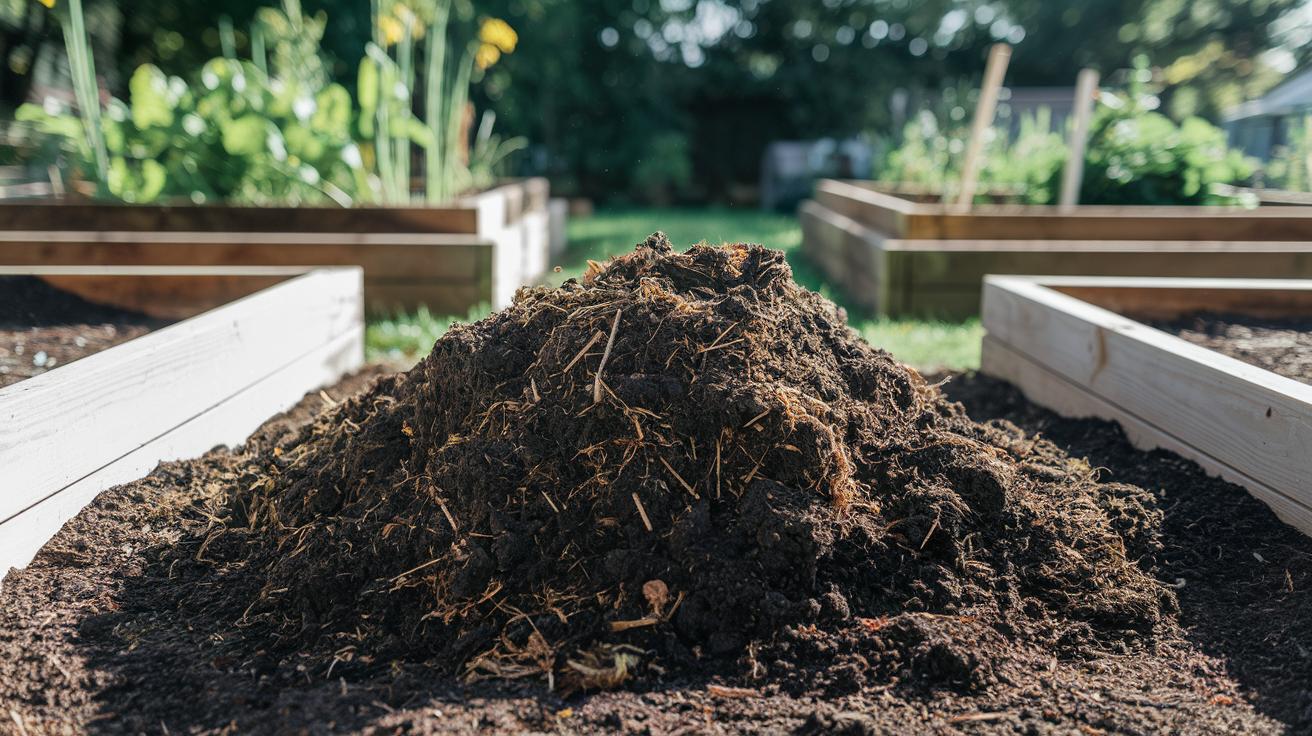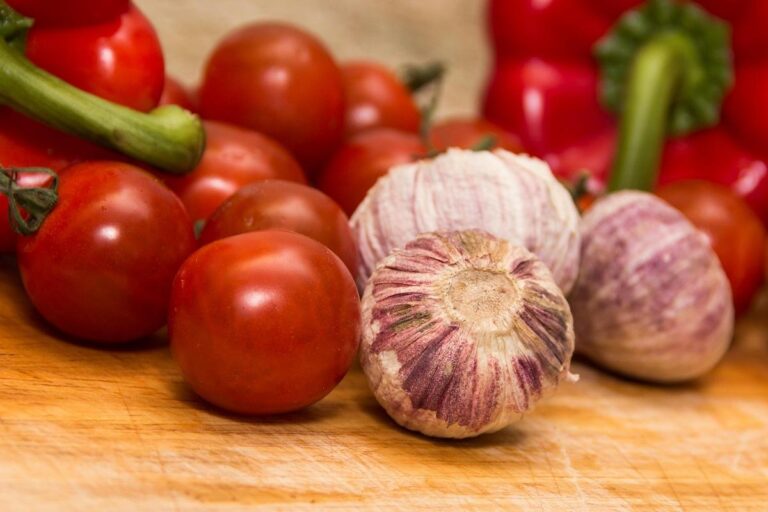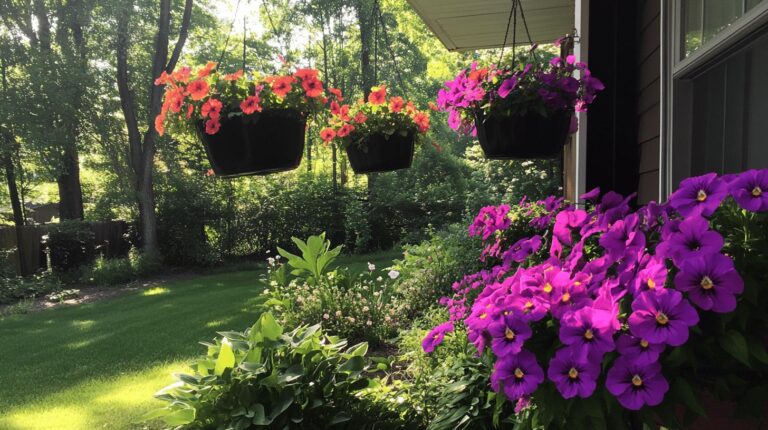Compost For Raised Beds: Powerful Plant Growth Hack
Ever wondered if a handful of compost can double your tomato harvest next season?
I’m talking about that warm, crumbly mix that smells like the forest floor after rain.
Gardeners often chase fancy fertilizers, you know?
But compost (decayed leaves and veggie scraps that turn into plant food) brings soil life to its feet and sends roots exploring every crumb.
In raised beds, compost isn’t a luxury.
It’s your secret weapon for fluffier, moisture-friendly soil and powerhouse seedlings.
By the way, my cat loves sunning on mine when I’m not looking.
And here’s the plan: pick compost with the right mix of browns (dry leaves, wood chips) and greens (kitchen scraps, grass clippings).
Then grab a handful and squeeze.
If only a drop or two comes out, it’s just right.
You can use a simple pH (measure of soil acidity) test strip to make sure nothing’s out of balance.
Get your hands dirty and mix that compost into your raised beds.
Then watch your tomatoes go wild next season.
Raised Bed Compost Essentials: Selection and Preparation Overview
When you’re picking compost (decayed organic matter that enriches soil) for your raised bed, make sure it’s fully broken down. You want a carbon-to-nitrogen ratio (C:N, that is the mix of carbon-rich browns to nitrogen-rich greens) around 25 to 30 to 1. Aim for moisture near 40 to 60 percent. If you squeeze a handful and see just a few drops, you’re at the sweet spot. And check pH (how acidic or basic it is), shoot for 6.5 to 7.5. By the way, my cat thinks fresh compost is the best nap spot.
Grab a compost thermometer and slide it in. It should read under 110°F, warm like a cozy towel but not hot enough to burn your fingers. Give your heap a sniff. It needs to smell earthy, with no sharp ammonia bite. Crumbles like cookie bits? Yes!
Mix mellow compost into your raised bed soil at about one part compost to three parts soil. That’s roughly 25 to 50 percent by volume. You’ll boost organic matter up to 15 percent and help roots spread. Water-holding goes up by 20 percent, so seedlings drink but don’t drown. And to keep things draining well, stir in a handful of coarse sand or small bark chips.
Now, proper prep means screening out sticks or big chunks. Break any lumps into smaller bits so roots meet the same soft texture all the way through. That makes soil fluffy for thirsty roots yet steady enough to hold moisture near seedlings. Once this mix is in place, your raised bed becomes a powerhouse for spring planting.
Compost Types for Raised Beds: Organic Materials, Vermicompost & Manure
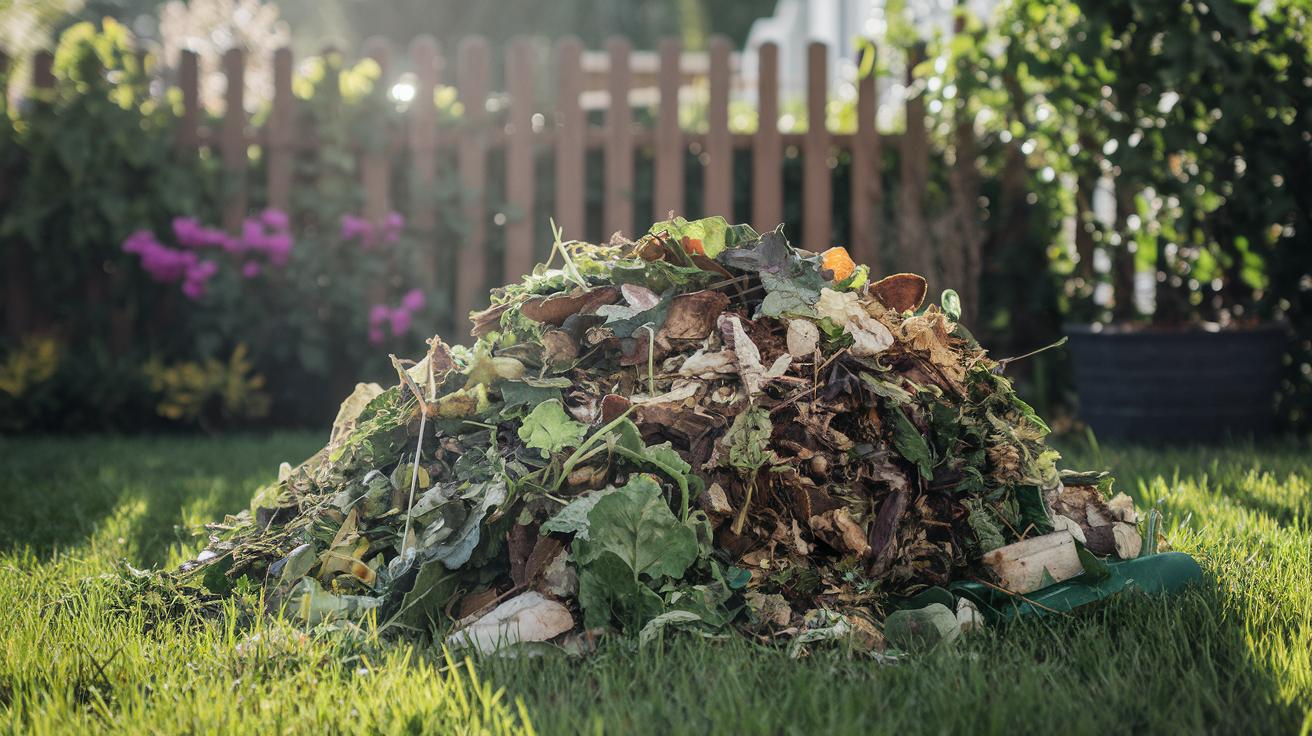
Choosing compost for your raised bed is like picking the perfect meal for hungry roots. You have three go-to options that feed your soil in their own special way.
Kitchen and Yard Waste Compost
Have you ever smelled the warm, earthy scent of kitchen scraps mixing with fall leaves? This compost (decayed organic matter that enriches soil) comes from fruit and veggie peels, coffee grounds, eggshells, fallen leaves, and grass clippings.
- Layer two parts brown material (dry leaves or straw) with one part green material (food scraps or fresh grass).
- Cold composting takes six to twelve months with an occasional turn.
- Hot composting needs turning every day or every other day and finishes in three to six months.
- It adds bulk and balances moisture, you know? And it turns waste into garden gold!
Vermicompost Castings (Worm Compost)
Red wiggler worms munch on your kitchen scraps and leave behind castings (worm droppings). These dark pellets are packed with nutrients and beneficial microbes that help roots grow strong. Oops, I just spilled some on my jeans.
- Nutrient mix: roughly 5% nitrogen, 0.5% phosphorus, and 2% potassium.
- Seedling boost: mix one part castings with four parts soil for a gentle pick-me-up.
Manure-Based Compost (Animal Droppings)
Manure from animals makes powerful compost but needs time to mellow out. Fresh manure can burn young plants if it’s not aged properly.
- Types: cow, horse, chicken, or rabbit manure.
- Curing: maintain above 131°F for six months to kill weeds and germs.
- Nutrients: usually 0.6–1.0% nitrogen plus extra phosphorus for strong roots and blooms.
- Safety tip: use a compost thermometer. When it cools below 110°F and smells earthy, it’s ready.
By the way, my cat loves napping on my raised bed… Back to compost. No matter which kind you choose, keep your pile as damp as a wrung-out sponge (about 40–60% moisture). Give it a turn now and then. Then mix it into your raised bed soil. Your plants will thank you all season long.
Indicators of High-Quality Compost for Raised Bed Soil
Have you ever poked a gardening fork into your compost pile? Good stuff feels soft and earthy between your fingers. Here are three simple clues that your soil food is top notch.
-
Crumb size and color
Look for uniform dark brown crumbs under 1/4 inch (think pencil eraser size). Each piece should feel soft and melt in your hands, like tiny coffee grounds. Oops, just spilled a bit on my shoe, yep, that’s perfect compost (decayed organic matter that enriches soil). -
Signs of life
Spot a red wiggler earthworm or see fine white hyphae (fungal threads) tangled around the crumbs. That wriggle or web of threads means busy microbes are turning scraps into root fuel. -
Quick nutrient checks
Grab a home N-P-K (nitrogen-phosphorus-potassium) kit for a fast peek at your compost’s power or pop a sample in the mail for a full lab report. If your DIY test strip glows bright blue, you’ve got enough nitrogen to kick-start leafy green growth.
Back to the basics: don’t forget to revisit Raised Bed Compost Essentials for tips on moisture, pH, temperature, and that fresh earthy aroma.
Mixing Ratios & Layering Techniques for Raised Bed Compost Integration
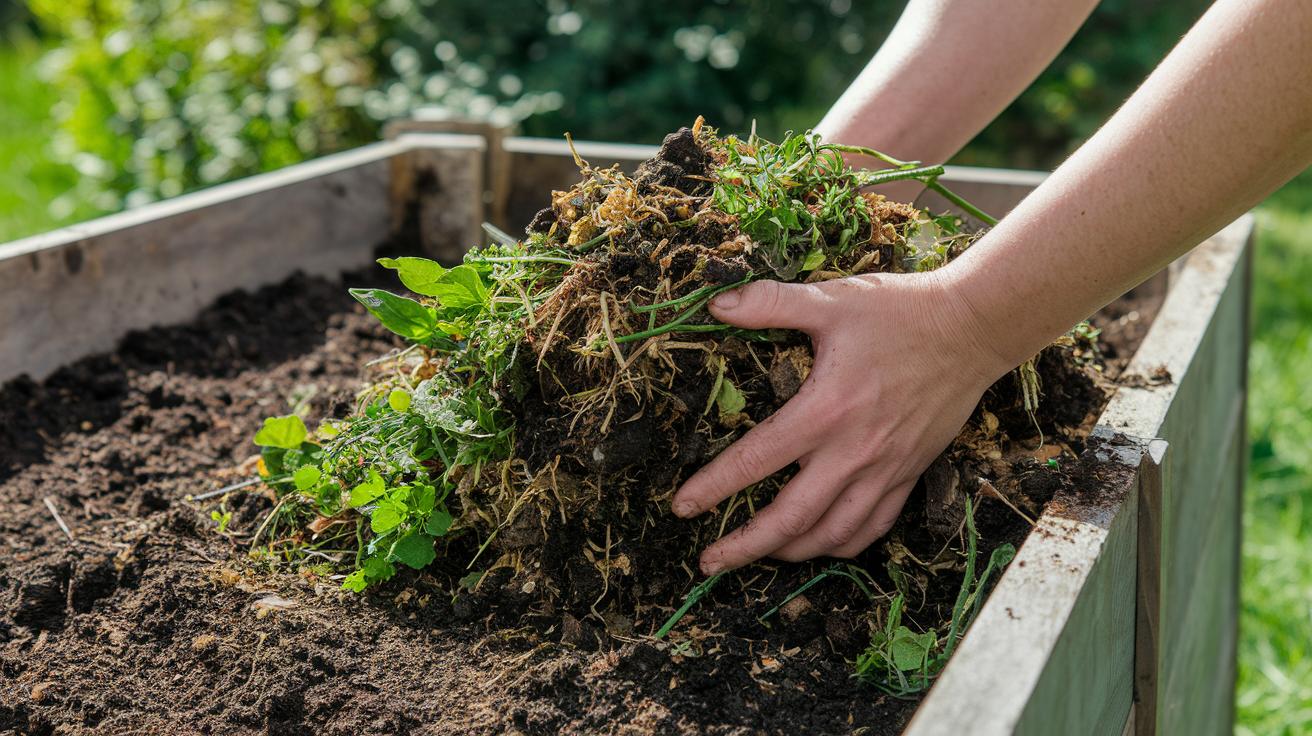
Let’s get your roots a running start with the perfect mix of organic matter. For new beds, scoop equal parts mature compost (decayed organic matter that enriches soil) and garden soil (the loose top layer of earth) or topsoil (well-balanced surface soil) into a wheelbarrow. Stir until it feels light and crumbly. This 1 to 1 blend feeds hungry roots and keeps soil airy.
Here’s how to layer compost into beds you already have:
-
Base mix for planting
- Spread a 3 to 4 inch layer of the compost-soil blend over the bed.
- Gently rake so it merges with the top inch of existing soil.
-
Annual top-dress refresh
- In early spring or fall, scatter 1 to 2 inches (2.5 to 5 cm) of fully cured compost over the surface.
- Water it lightly to lock in moisture and wake up tiny soil helpers.
-
Sheet layering for ongoing fertility
- Lay down 1 inch of green scraps (grass clippings or kitchen bits).
- Cover with 2 inches of brown material (straw or dried leaves).
- Repeat until you reach 4 to 6 inches total. Then let worms and microbes work their magic.
By the way, my cat loves sunning on the edge of my raised bed during this step.
Oops, I almost forgot. Keep your compost pile breathing by stirring or turning it every week or two. This air flow stops damp spots from going stale and revs up microbe action.
Moisture control is key for both beds and piles. Give a handful of compost a squeeze. It should feel like a wrung-out sponge, with only a drop or two of water. If it’s soggy, let it dry a bit. If it’s dusty, add a light sprinkle. That way your soil stays fluffy, crumbles easy, and holds water just right so veggies get a steady sip.
Sourcing Compost for Raised Beds: Homemade vs. Commercial Options
Thinking about compost (decayed organic matter that enriches soil) for your raised beds? You’ve got two paths. You can roll up your sleeves and make your own mix. Or you can grab a ready-made bag at the garden store.
With cold composting (a no-turn pile), you barely lift a shovel. Just layer brown leaves, green grass clippings, and veggie scraps. Sprinkle in coffee grounds for a little nitrogen boost (that’s plant food). Add straw or shredded paper for extra browns (carbon-rich bits). Over 4 to 12 months it turns into crumbly goodness. Keep an eye on moisture: squeeze a handful and only a drop or two should appear. You control the balance of browns and greens, and it costs almost nothing. The trade-off? You’ll need a corner of lawn for your compost station and time to wait.
And if you’re in a hurry, try hot composting (rapid breakdown with heat). Build a pile at least three feet high, about the height of a small kid. Wet it until it feels like a wrung-out sponge. Then turn it every day. In 6 to 8 weeks you’ll have warm, dark compost that’s cooled below 110°F. It zaps weed seeds and gets your beds ready for spring. But your arms will notice all that turning!
Or skip the work with commercial mixes. Bagged organic blends (often labeled 1-1-1 to 2-2-2 NPK) come screened smooth and sometimes include worm castings or biochar (light charcoal that helps soil). You’ll find them at co-op nurseries or home stores, often certified organic. Some even have beneficial fungi or mycorrhizae to help roots grow. Stash a bag in your shed. Then scoop it right into beds and plant.
| Option | Timeline | Benefits | Drawbacks |
|---|---|---|---|
| Cold Compost | 4–12 months | Low effort, budget-friendly | Slow, needs space |
| Hot Compost | 6–8 weeks | Fast, kills weed seeds | Labor-intensive |
| Bagged Mixes | Ready now | Consistent, tidy | Cost per bag |
| Bulk Conditioner | Immediate | Great for big beds | Delivery and storage |
Ask yourself before you choose:
- How much space can I spare for a compost heap?
- Do I want quick results for spring planting?
- Am I after extra microbes (like worm castings) or mellow humus?
Bulk soil conditioners come by the cubic yard, perfect if you have several raised beds. One delivery can fill multiple boxes. Just shovel or wheelbarrow it in. Remember to factor in delivery fees and where you’ll store it. You can even mix half home-grown compost with half bagged organic mix. It’s a budget-friendly blend that feeds roots and keeps soil airy. And if you’re near a city composting facility, ask about discounted bulk deals for residents. Team that up with your own pile and you’ll stay topped off all year without emptying your wallet.
Application Rates & Seasonal Timing for Raised Bed Compost
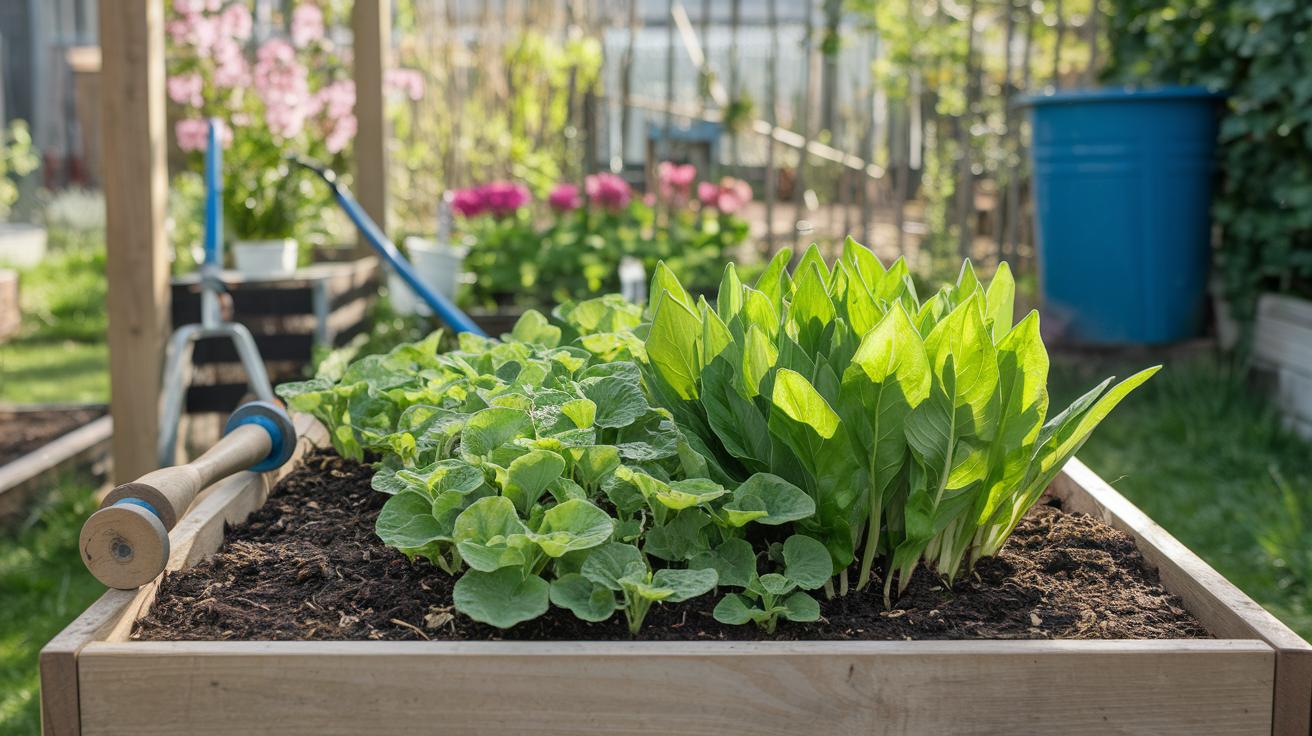
Spring feels like new beginnings, especially in your raised bed soil. About two weeks before you plant, spread a 2 to 4-inch layer of mature compost (decayed organic matter that enriches soil) over the topsoil. Use a garden fork or shovel to work it in until the earth feels soft and crumbly under your hands.
By the way, every two years I test my soil fertility. You can mail a sample to a lab or grab an at-home kit. Dunk a pH strip into some damp soil and aim for about 6.5. That’s the sweet spot for most veggies. If you’re mapping out what to plant in raised garden beds (https://www.backyardsuperstar.com/?p=650), you’ll see why this spring prep is a game changer.
In summer your plants need a little extra love. Try a monthly compost tea, mix one part compost with ten parts water, let it steep overnight, then pour it around the base of each plant. It’s like giving your tomatoes and peppers a refreshing garden cocktail to help them handle the heat.
Once harvest winds down in fall, spread a 1 to 2-inch layer of compost over any bare spots. Then cover with a quick-growing cover crop or a layer of mulch. This top dressing feeds earthworms and microbes and stops fall rains from washing precious soil away. Simple step, big reward for next spring.
Winter is for storing your screened compost until you need it again. Find a cool, dry spot that stays around 40-50°F. Cover the pile with a breathable tarp so frost, snow, and critters stay out but air can still circulate. When early spring rolls in, you’ll have that fluffy, ready-to-use compost right where you need it.
Maintenance Tips for Compost-Enhanced Raised Beds
Want happy, healthy raised beds? Skip the spade and just top-dress each season with a thin 1-inch layer of compost (rotten plant bits that feed soil), and feel the warm earth crumbling between your fingers. It’s simple: sprinkle and gently rake so you don’t disturb roots. This no-till trick (no turning or forking) keeps soil crumbly, the way worms love it.
Next, spread 2 to 3 inches of mulch (stuff like straw or wood chips) over your soil. It’s a cozy blanket that holds in moisture, chills weeds, and keeps temperature steady. When the layer thins, just toss on fresh mulch. Your beds will look neat and be ready for new sprouts.
Dry spells happen, right? Aim for about half-moist soil. Here’s a quick squeeze test: it should feel like a wrung-out sponge with just a drop or two of water. And soaker hoses work wonders, dripping water right at the roots so you don’t wash away your compost.
Want more worms and helpful microbes? Treat your soil to small handfuls of coffee grounds and leaf mold (rotted leaves). Stir them into the top inch of earth now and then. Then watch the wiggles and see white fungal threads pop up, nature’s cleanup crew at work.
By the way, come spring I brew compost tea by mixing compost in water and letting it sit for a day. Have you ever seen that dark, rich liquid swirl with life? I pour it around seedlings and perennials. It’s like a wake-up call for microbes, giving roots a gentle boost before planting.
Your raised beds will hum with life all season long.
Final Words
In the action, we covered how to pick mature compost with the right carbon-to-nitrogen balance, moisture level, and pH. Then we explored kitchen-scrap mixes, worm castings, and aged manure so you know what feeds your raised beds best.
Next, you learned to spot quality compost by its dark, crumbly texture, earthy scent, and stable temperature. We gave you clear mixing ratios, layering methods, and seasonal schedules to keep your garden thriving.
With DIY or store-bought options, plus easy upkeep tips, you’re ready to enjoy a lush, low-fuss yard. Here’s to vibrant blooms and bountiful harvests with compost for raised beds!
FAQ
What makes compost ideal for raised beds?
Ideal compost for raised beds has a carbon to nitrogen ratio (C:N ratio) between 25:1 and 30:1, moisture at 40–60 percent, pH near 6.5–7.5, cool below 110°F, and smells earthy.
How do I choose between kitchen‐scrap, vermicompost and manure compost?
Choosing between kitchen‐scrap, vermicompost and manure compost depends on needs and timeline: kitchen‐scrap finishes in 3–6 months, vermicompost offers about 5% nitrogen and microbes, and well‐aged manure adds steady phosphorus.
How can I tell if compost is mature and ready for use?
You can tell compost is mature when it’s dark brown, crumbly in pieces under ¼ inch, has an earthy scent, stays below 110°F, shows a pH between 6.0 and 7.5, and hosts earthworms.
What’s the best mixing ratio for compost in a new raised bed?
The best mix for a new raised bed is one part compost to one part garden soil or topsoil by volume, which balances nutrients, soil structure, water holding, and drainage.
Should I use homemade or commercial compost for my raised garden?
Homemade compost is cost-free but takes 4–12 months with minimal turning; commercial mixes are screened, lab-tested for NPK values, and ready to use.
When and how much compost should I apply each season?
Apply 2–4 inches of compost two weeks before spring planting, spread 1–2 inches after fall harvest, brew monthly compost tea in summer, and store screened compost in a cool, dry spot over winter.
How do I maintain compost‐enriched raised beds without digging?
Maintain beds by top‐dressing with 1 inch of compost each season, mulching 2–3 inches of straw or wood chips, keeping moisture near 50 percent, and brewing compost tea in early spring.

